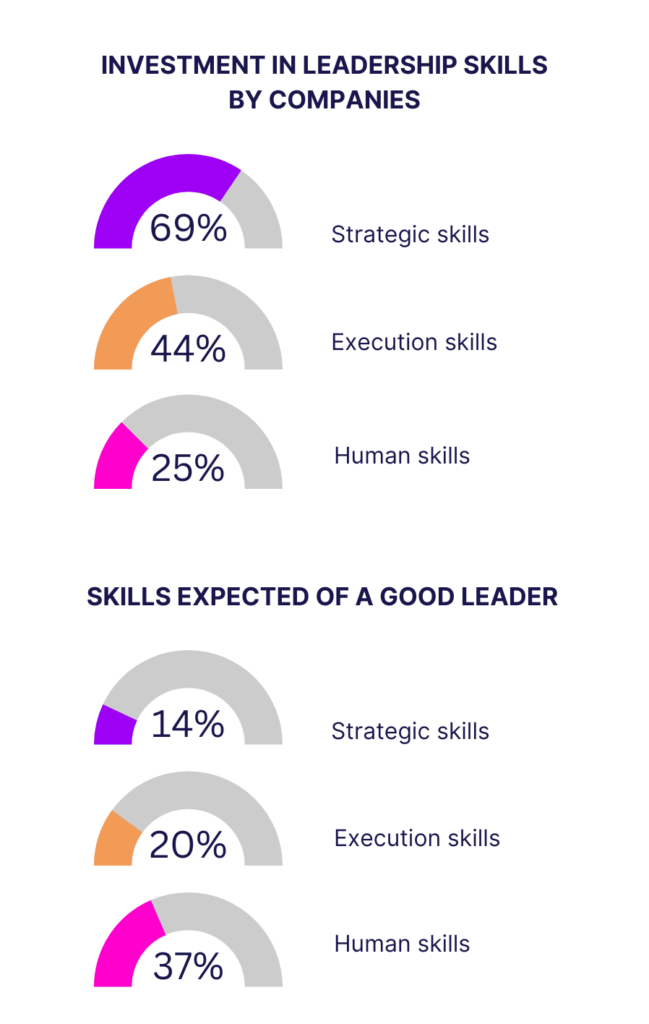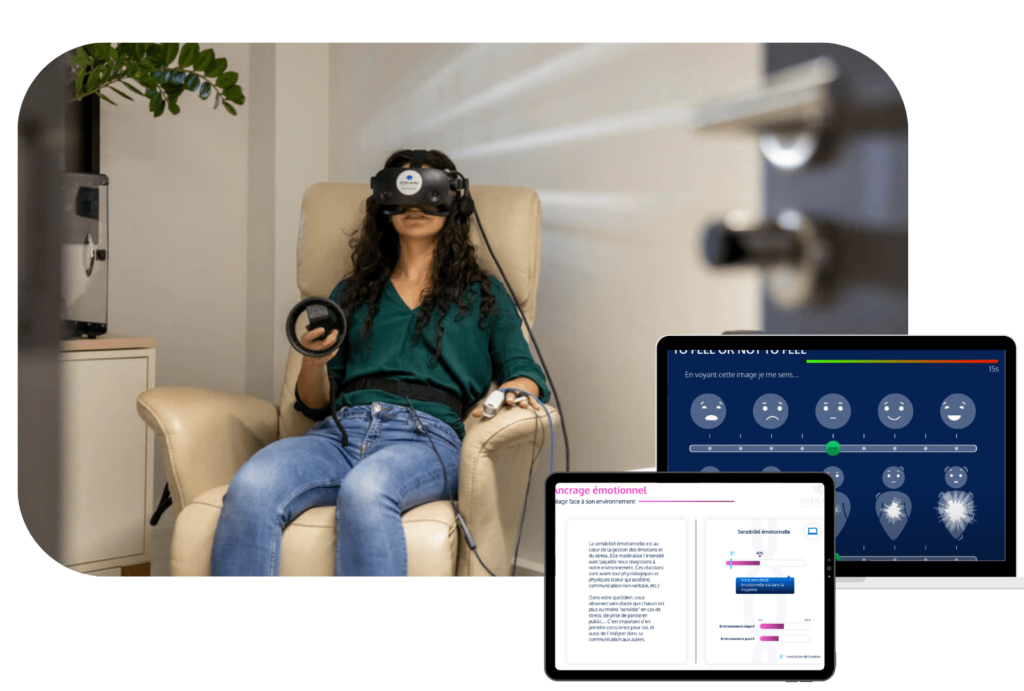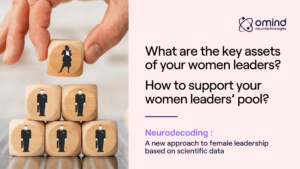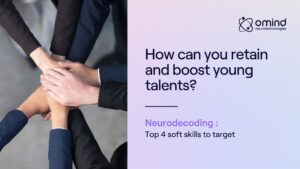Hybrid work, instability and uncertainty, new employee expectations… Managerial models have undergone radical change these past few years. Top managers are increasingly embracing emotional skills to boost collective performance and develop ‘CORE LEADERSHIP’: human, empathetic and cooperative. According to an MIT¹ neuroscientific study (Woolley et al., 2010), investing 1€ in collective intelligence generates 5X MORE ROI than recruiting new expertise or developing hard skills.
But in practice… How well do your executives master these key emotional skills? We’ve analyzed the data from the neuroscientific serious games played by our customers in their Omind programs, and measured their EMPATHY, COLLABORATION and COMMUNICATION OF THEIR EMOTIONS behaviors. Discover our exclusive results.
DOWNLOAD THE INFOGRAPHIC ON 'CORE LEADERSHIP' AMONG TOP EXECUTIVES

CORE SKILLS: HOW ARE YOUR MANAGERS DOING?

Despite a certain awareness in recent years of the importance of a people-oriented leadership model, a recent BCG² study showed that organizations still focus mainly on strategic qualities (69%) and execution qualities (44%), at the expense of human qualities (25%).
Yet companies that invest equally in these three qualities are almost 3X more likely to improve their performance over the long term. This means we need to focus on developing ‘core leadership’, considered by employees as a key characteristic of a good leader (37%).
“Emotional skills are still undervalued in companies’ leadership and managerial reference frameworks, even if we have seen a shift since 2020. Hybrid work and talent retention issues explain this recent shift.
More specifically, the skill of EMPATHY has traditionally been relegated to the background as a sign of weakness. In times of crisis, it’s a major performance lever in customer relations and employee commitment that we need to seize!”

HOW TO CONNECT WITH OTHERS?
NEUROSCIENTIFIC TIPS
- WATCH BEFORE YOU SPEAK: To develop a real connection with your interlocutor and encourage collective intelligence, it’s important to wait about 30 seconds before speaking. The aim: to better adapt your speech and create synergies.
- CLARIFY EXPECTATIONS AND COMMUNICATE, especially when you feel wronged. This first step will help the other person better understand your point of view.
- SHARE YOUR EMOTIONS: Give priority to seeking emotional support over instrumental support, which is richer in information⁴. For example, seek the advice and support of your collaborators in your missions. This will strengthen team bonds and boost performance. After all, strong ties count 20X more than weak ties in collective performance⁵!

At Omind, we’ve developed three offers combining neuroscience, virtual reality and serious games to raise awareness, train and support your managers, leaders or talents in human skills.
¹ Woolley, A. W., Chabris, C. F., Pentland, A., Hashmi, N., & Malone, T. W. (2010). Evidence for a collective intelligence factor in the performance of human groups. science, 330(6004), 686-688.
² BCG study, 2021. Human-centered leaders are the future of leadership.
³ Microsoft’s Human Factors Lab (2021). Research Proves Your Brain Needs Breaks : New options help you carve out downtime between meetings. Work Trend Index Special Report
⁴ De Montjoye, Y. A., Stopczynski, A., Shmueli, E., Pentland, A., & Lehmann, S. (2014). The strength of the strongest ties in collaborative problem solving. Scientific reports, 4(1), 1-6.
⁵ De Montjoye, Y. A., Stopczynski, A., Shmueli, E., Pentland, A., & Lehmann, S. (2014). The strength of the strongest ties in collaborative problem solving. Scientific reports, 4(1), 1-6.




